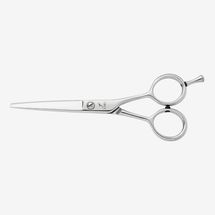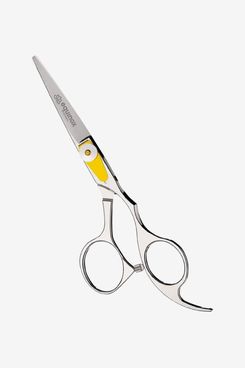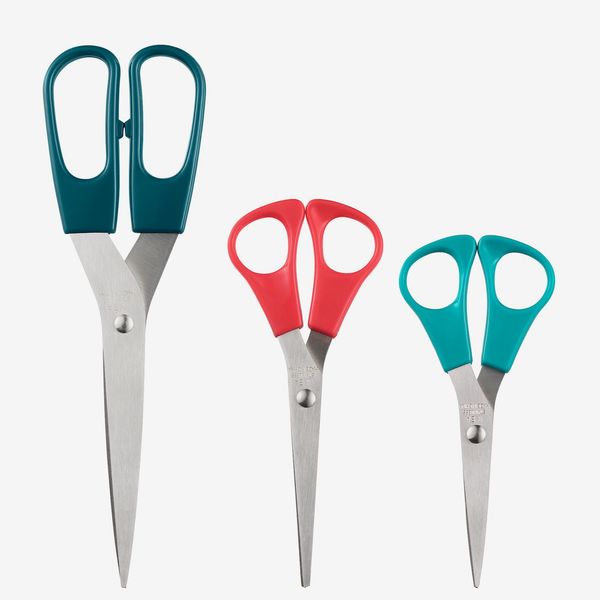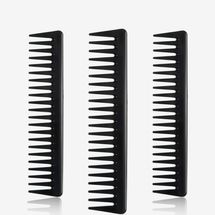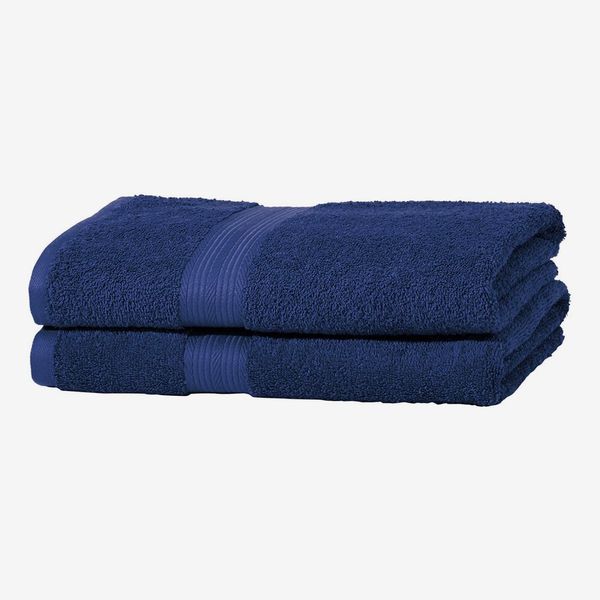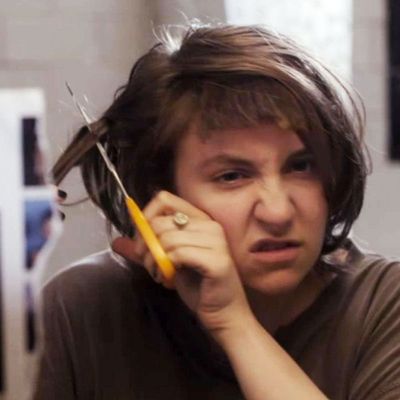
A version of this story originally appeared on the Strategist US.
A month into quarantine, you’re likely finding yourself pushing your fringe out of your eyes more frequently or noticing a few more split ends than usual. Or maybe your hair is looking a little thick, and you’re ready to try something you’d generally never attempt at home, like a trim — or shaving your head entirely. To get some tips about how to trim fringes, shave your head, or trim ends without ending up looking like Hannah Horvath after she tried to cut her hair at home in Girls, we reached out to four hairstylists. And while all suggested that your best bet is waiting until you can see your hairstylist again (those hundreds of hours of training aren’t for nothing), they did have some tips for touching up your hair in the meantime. Before we get started, one piece of advice from all: less is more. “Remember, it’s not what’s on the floor, it’s what’s left on your head,” says Lorraine Massey, the founder of CurlyWorld.
Trimming your own hair
Whether your hair is straight, wavy, or curly, our experts agreed that if you’re going to trim your own hair, it’s best to do it when it’s dry. “It’s better to approach the hair as it really is,” says Massey, who notes that you should not trim your own hair after artificially straightening or curling it. Both Massey and Dhiran Mistry, a hairstylist at David Mallett salon, told us that it’s worth investing in proper hair scissors. “You don’t need to spend a fortune on hair scissors, but you also don’t want to use blunt scissors, like kitchen or paper scissors,” says Massey. “Think of your hair as being a priceless fabric.” Mistry agrees. “One thousand percent I would not recommend using anything but a hairdressing scissor because they’re meant for cutting hair,” he says. “You can buy cheap hairdressing scissors online for like £15 or you can buy ones that we have for £1,000 — I would say you should feel safe if you spend in the £100 range.” Mistry and Massey both suggested shears from Jowell. [Editor’s note: The specific model they recommend is not available in the UK, so we suggest this similarly-priced alternative.]
To get started, Massey says, first sway your hair back and forth, so that it falls the way it’s naturally inclined to. The technique you’re going to want to use is “point cutting,” says Massey — rather than chopping the hair straight across. To point cut, you hold the scissors below the line of your hair, with the points oriented upwards. When it comes time to snip, you open the scissors only slightly, so just the points are cutting the hair, rather than chopping with the full length of the blade. Point cutting is “much, much more forgiving,” according to independent hairstylist and “long-time home haircutter” Stefanie Albaeck, and can be used for trimming dry ends and fringes as well.
If your hair is past your shoulders, part it, and then place it in front of your shoulders “as though you are making pigtails,” says Massey. Then, with your hair in front of your chest and using the point-cutting technique, trim evenly across the ends of each side. The key to this and all at-home haircuts is to cut less than you feel initially inclined to: You can always go back and trim more later.
If you have curly hair, Massey says, “Simply stretch a small section of strands to their furthest point, and holding your scissors, snip off the ends.” As with straight hair, use the tip of the scissors to cut, and don’t open the blade too widely. Continue cutting in small sections. “In between snips, gently shuffle or sway the hair to see how the snipped hair looks in relation to the neighboring strands,” says Massey.
If you simply have a few split ends, you don’t necessarily need to do a full trim. Mistry recommends just snipping the strand with the split end, instead of taking on the whole shape of your hair.
Trimming someone else’s hair
If you’re at home with somebody you trust to cut your hair, you might be able to achieve a straighter line across the back than if you were to cut it yourself. To start, have your haircutter brush the back section of your hair so that it falls straight down your back. Then they can eyeball a straight line, and using the point-cutting technique (do not allow them attempt one big chop), work their way across the ends of the hair. At this point, you’ll have a straight cut across the hair on the back of your head, and will need to even out the sides. (Just trim from the back along the left side, then the right.)
Trimming fringes
Brooke Jordan of Birdhouse Salon (who also just launched an at-home colour product) warns: “Do not cut a fringe if you don’t already have one” (in general, the stylists we talked to agreed that you shouldn’t try any cut that’s very different from what’s already on your head). When it comes to trimming already-existing fringes, she recommends working in front of a mirror and using the point-cutting method rather than cutting straight across. And as for shaping, Jordan says, “In most cases, it’s best to keep the fringe longer on the outside and shorter on the insides, to create a face-framing effect.”
If your hair is curly, Massey says that you should not “pull down your fringe” before cutting them, otherwise you might take too much off and leave them too short. Standing in front of the mirror with your hair in its natural position, start with a strand in the middle of your forehead and carefully snip the ends. Then trim the neighboring strand to the left, leaving it ever-so-slightly longer than the previously cut strand, and repeat until you’ve reached the edge of your fringe on the left side side. Repeat from center to the right edge of your fringe.
Hairdressing shears work just as well for trimming fringes, but Albaeck told us about a surprising alternative she uses in a pinch: “While I do have more specialized equipment, I like trimming my fringe on the fly with the yellow-handled Ikea scissors — they’re a great size, and have (surprisingly) a great sharpness that works well for fringes and trims.” Albaeck says that if you don’t have these or hairdressers’ shears, “choose the sharpest scissors you have.” She adds that it is possible to trim fringes with dull scissors, but “just know this will take much longer.”
Mistry also suggests having a wide-toothed comb on hand when trimming fringes. “You can use them to keep your hair in place as you trim,” he says. He likes this wide-toothed comb in particular because of the width of the teeth, which he says will keep your strands in place, without pulling them down too tautly. You can use the combs for general hair maintenance, too: “I love combing hair with these after the hair is dried,” he says. “It gives it a nice shiny finish.”
Shaving your head
“If your hair is already short you can just go in with clippers, but if your hair is long you’ll have to cut length before using clippers, because otherwise it can get caught and that would be really painful,” says Mistry. For this, he suggests using Wahl clippers, which are ones that he uses at work. “The box comes with a bunch of different guards, oil for the blades, and a pair of scissors,” he says. “If you’re shaving it all off, it doesn’t matter if you start in the front or the back, but I wouldn’t recommend trying a fade, because those are extremely difficult for even a professional to do.” Albaeck says that you should first move the clippers “against the direction of hair growth — up the back and sides of the head,” and that you should then run the clippers “over and over and over the head in all different directions to catch any hairs the clippers missed.” Afterward, she says, “take a good look in a mirror for errant fuzz — around ears, at hairline, neckline — and run the clippers over one last time to catch more of the hairs that you might have missed.”
Cutting your kids’ hair
If your child’s hair is looking due for a trim, Massey suggests first giving them a distraction: “Place your child in front of their favorite TV show,” she says. Next, put a towel or plastic tablecloth over their shoulders, and follow the same steps you would for trimming adult hair. “If you have a rambunctious little one who will not keep still, it can be very dangerous even for seasoned hairstylists to cut their hair,” Massey adds. “If this is the case, maybe try snipping their strands while they are asleep.”
The Strategist UK is designed to surface the most useful, expert recommendations for things to buy across the vast e-commerce landscape. Read about who we are and what we do here. Our editors update links when possible, but note that deals can expire and all prices are subject to change.
